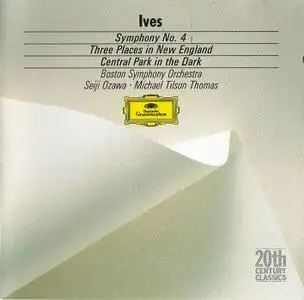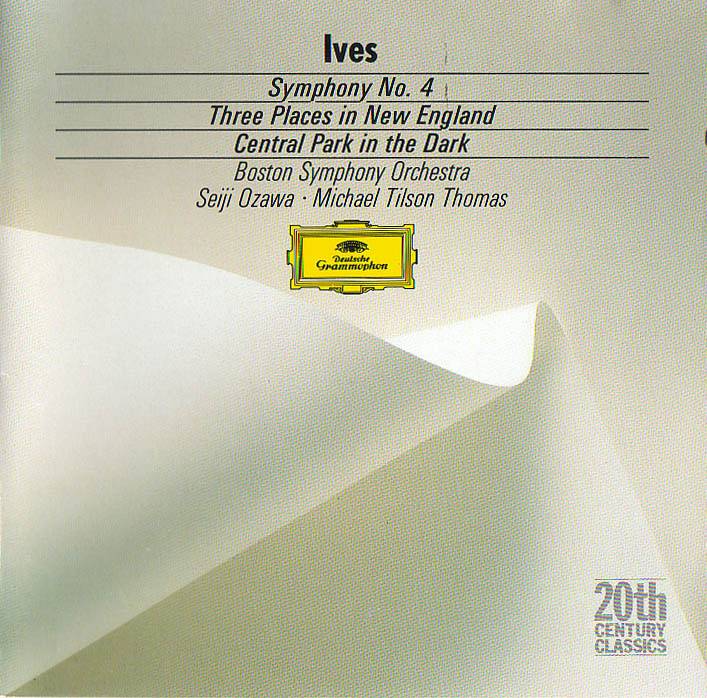Charles Ives - Symphony no.4 - Seiji Ozawa / Boston Symphony Orchestra & Tanglewood Festival Chorus
Classical | Apple lossless | DG 423 243-2 | 470 Mb
Classical | Apple lossless | DG 423 243-2 | 470 Mb
plus: "Central Park in the Dark" by Ozawa and Orchestral Set No. 1, Three Places in New England conducted by Michael Tilson Thomas
Perhaps the most remarkable piece of orchestral music Ives completed was his Fourth Symphony (1910–16). The list of forces required to perform the work alone is extraordinary. The final movement can be seen as an apotheosis of his work and a culmination of his musical achievement. A complete performance was not given until 1965, almost half a century after the symphony was completed, and more than a decade after Ives' death.
Perhaps the most remarkable piece of orchestral music Ives completed was his Fourth Symphony (1910–16). The list of forces required to perform the work alone is extraordinary. The work closely mirrors The Unanswered Question. There is no shortage of novel effects. (A tremolando is heard throughout the second movement. A fight between discordance and traditional tonal music is heard in the final movement. The piece ends quietly with just the percussion playing at a distance.) In it Ives finally resolves all of his compositional issues and the full force of his considerable genius is heard. The final movement can be seen as an apotheosis of his work and a culmination of his musical achievement. A complete performance was not given until 1965, almost half a century after the symphony was completed, and more than a decade after Ives' death.
Some critics panned Ozawa's Fourth. But it's worth hearing. Any work of art as protean as the Fourth Symphony certainly defies any single interpretation. (If you need incentive, this release is also coupled with an outstanding version of Three Places in New England.) But there are some shortcomings. In particular, Ozawa stumbles in the multi-layered second movement. He presents a much less coherent musical argument than others.
Source: http://www.musicweb-international.com/Ives/index.htm



